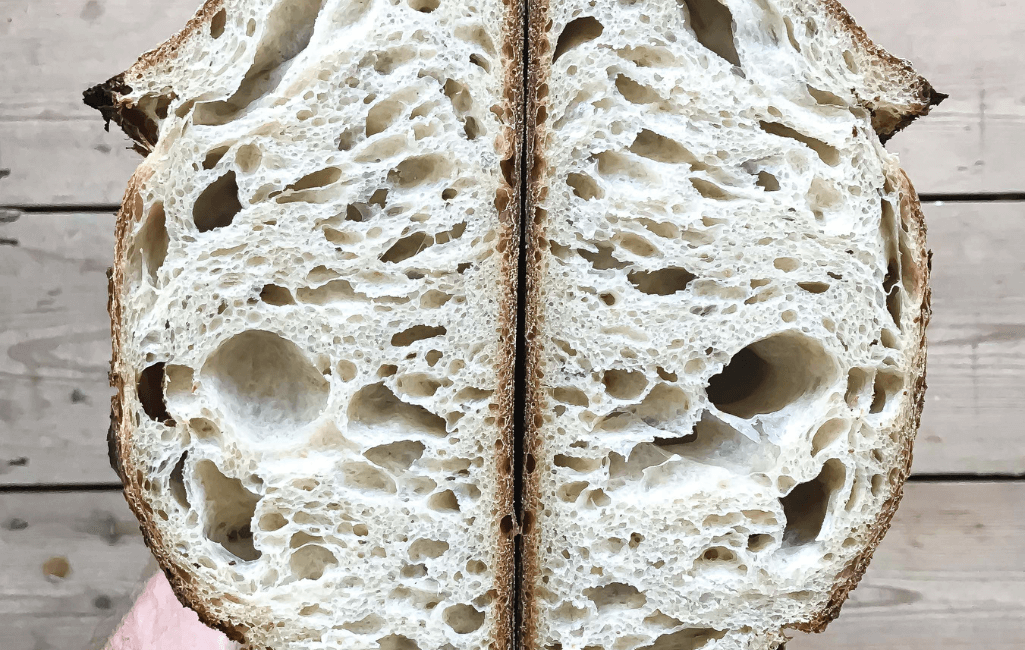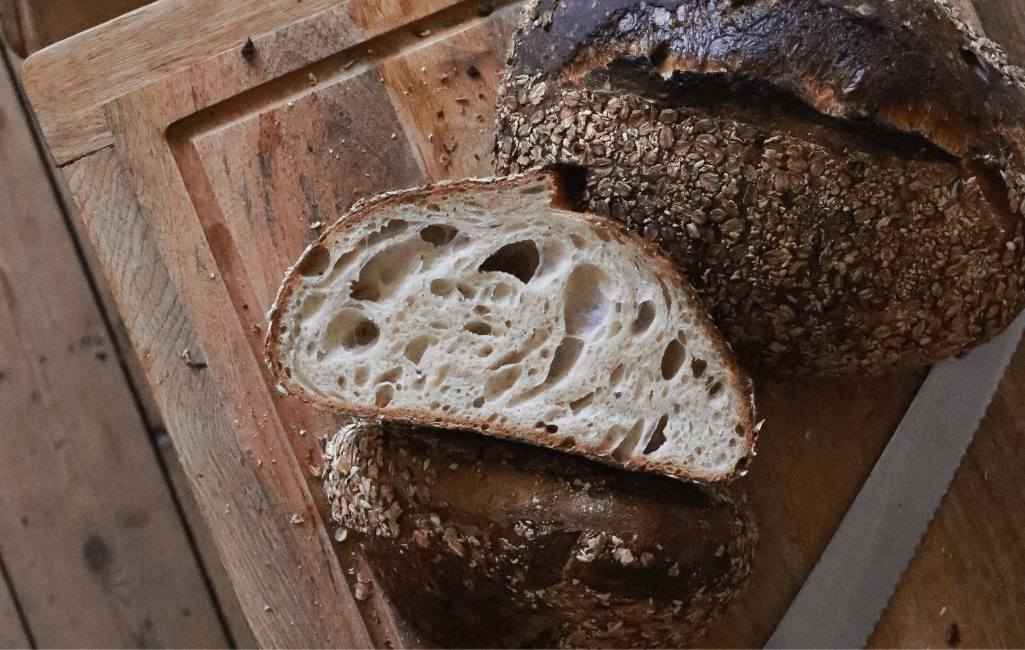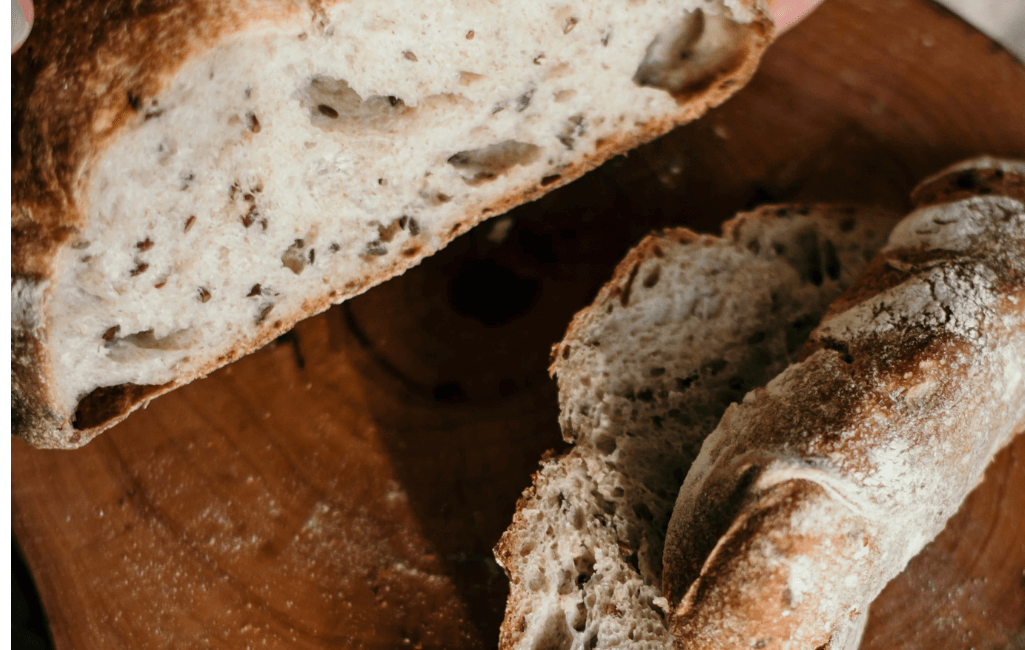
Learn About The History and Origins of Sourdough Bread
Sourdough has become more and more popular over the last few years, and its versatility means that it can be used to make a wide range of bakery products - from pancakes and muffins to brownies and biscuits. But it all started with sourdough bread.
Now An Artisan Bread
This crunchy artisanal bread has become somewhat of a trendy food item over the last few years and is often associated with hipster cafes and independent coffee shops. However, its origins are very humble and far removed from how it is currently perceived.
Traced Back To Egypt
The story behind sourdough bread is an interesting one that dates all the way back to Ancient Egypt making it one of the oldest forms of leavened bread (bread that contains a raising agent). Due to it being such an ancient invention, there is some uncertainty over exactly how it was first made although the most popular and believable theory is that it was a happy accident.
It is understood that the Egyptian people inadvertently left out some bread dough which led to wild yeast drifting into the mix causing it to rise. They quickly realized that this method of baking created an extra ingredient which, in turn, produced a bread that had a lighter texture and, arguably, better taste.
Sourdough Bread Became Adopted By Ancient Greeks
The success of this accidental discovery led to it being adopted by Ancient Greeks, where it went from being baked at home to becoming a staple in bakeries. Then it was later picked up by the Roman Empire who further developed sourdough bread into what we are more familiar with today.
Sourdough Bread Roots In California
In 1848, during the California Gold Rush, some members of a master baker family from France traveled to San Francisco with their sourdough techniques. The sourdough culture here was unique and involved, what they call, a ‘Mother Dough’ which is a mixture of flour and water fermented with bacteria. This slight alteration in the baking process improved the quality of the bread even more.
This helped the master bakers become famous amongst the miners who would flock to their bakery every morning in search of this special bread. It is also the reason why San Francisco is now widely regarded as the mecca of sour-style bread.
Sourdough then journeyed to Alaska and the Yukon territories of Canada during the Klondike Gold Rush of 1898. Due to the harsh conditions that miners faced, it was impossible to rely on conventional leavenings, such as yeast and baking soda, so they resorted to carrying a pouch of sourdough starter around their necks or on their belts. Many would even sleep with it to prevent it from freezing in the extreme low temperatures they were confronted with at night. This earned the miners the nickname, sourdough, which is also where the name of the bread originates.

How is sourdough bread made?
The traditional method of making sourdough bread involves just three ingredients: flour, water and salt; however, it isn’t uncommon for olive oil to also play a part.
The flour and water are required to create the starter (a fermented dough) which is what causes the bread to rise, whilst the salt helps regulate the yeast’s activity to make sure the fermentation process doesn’t occur too quickly and allows your bread to develop flavor.
To begin, you need to first make the levain (or starter) by combining the flour and water into a dough-like mixture and then leaving it at room temperature in a jar or plastic container. You will need to feed the starter with more flour and water every few hours.
This process is a long one and it does require some care in order for you to ensure that your dough rises well. It can sometimes go on for days depending on the environment that your starter is sitting in.
But you’ll know that it is ready to be used to make the bread once it becomes bubbly and has doubled in size.
The starter is then combined, in a large bowl, with more flour and some salt (between 1-2% of the total amount of flour) where they are mixed together.
At this point, some recipes may also mention that you add olive oil to soften the crust and water.
After this dough has rested and risen (which can take hours), it is ready to be stretched, folded and shaped into a loaf of sourdough bread then baked in the oven for about 45 minutes.
There are many periods of resting and waiting when it comes to making sourdough bread so it does require a lot of patience but the outcome is worth it.
What is the difference between regular bread and sourdough bread?
If you were to compare sourdough bread to normal bread by reading the recipes, then it would be easy to think that they are very much the same since they use the same baking method and contain almost all of the same ingredients. But there is one key difference. Regular bread is made using store bought yeast that reacts with the gluten which causes the dough to rise. Sourdough, on the other hand, is made using a ‘starter’ which is a combination of yeast and bacteria that has grown inside a paste made from flour and water. These bacteria produce lactic acid which ferments the dough. This one minor alteration to the recipe causes sourdough to have many notable differences to regular bread.
What Is The Difference In Sourdough Bread to Regular Breads
The first of these differences is clear just by looking at the two types of bread alongside one another. A loaf of sourdough bread is typically only available in a round, oval or baguette shape with a golden, brown outer crust that has been dusted in flour, whereas a loaf of regular bread tends to be in a rounded or oval oblong shape with a much lighter-coloured crust.
When you slice into sourdough bread, the physical differences become even more apparent.
The interior will have an open crumb that is characterized by large, even holes distributed throughout which is evidence of sufficient and robust fermentation.
Regular bread has a closed crumb interior which means less air pockets and a denser consistency.
If the contrast in their appearance was not enough, the texture of sourdough bread undeniably sets it apart from conventional bread too.
Sourdough crust is much tougher and crispier whilst the interior (or crumb) is often described as being light, airy and chewy.

The Distinctive Taste Of Sourdough Bread
Then there is the taste which might also be the most important differentiation between sourdough and regular bread.
Sourdough has a distinctive tangy taste that is a result of natural yeast used in its recipe. The ingredients, plus a warm environment, create a perfect storm for the starter to ferment and take on that signature sour flavor.
Sourdough bread is still perceived as a more luxury food item despite its wide-spread availability and popularity. Therefore, it is usually priced higher than regular bread - and people are willing to pay for it.
The fact that it also takes longer to make sourdough bread may play a part in this higher price point too.
Since it can take anywhere between 3 - 12 hours for it to rise, depending on the temperature of the room, the baking process could be seen as more time-consuming, whereas regular bread can be baked within a couple of hours.
Is sourdough bread healthier than conventional bread?
The differences go beyond that which is tangible and visible; there are some that are based on the nutritional value of each type of bread.
Many even consider sourdough to be a healthier alternative to conventional bread because the fermentation process of sourdough consumes some of the starch and sugar contained in the dough. This reduces the amount of carbohydrates and fats in the finished loaf, though the exact number will vary depending on the type of sourdough being made (i.e. whole wheat, white or german rye).
This also means that sourdough does have fewer calories than regular bread too.
To give you a general idea of what the nutritional breakdown of sourdough bread is, here is what is contained, on average, within on medium slice made using white flour:
188 calories
37g of carbohydrates
8g of protein
1g of fat
What’s more, sourdough contains a variety of vitamins and nutrients that are processed out of other kinds of bread. It has small to moderate amounts of iron, magnesium, potassium, zinc, vitamin E, phosphate, thiamin and so much more.
All of these minerals are key in maintaining a healthy and balanced diet which makes sourdough bread a nutritive food, especially in comparison to regular bread.

Are There Other Benefits of Sourdough Bread
The popularity of sourdough is understandable.
We know that it tastes great and has a unique flavor that can’t be replicated with other types of bread or baked products. We also know that it is relatively easy to make although it does take a lot of time.
But what elevates sourdough bread even further, especially in today’s society, is that it is extremely versatile. We live in a time where convenience and variety are a priority so any product that can deliver on these two things is a winner.
Sourdough bread does just that as it can be used to quickly and easily make many of our favorite meals and snacks. It’s great when toasted, perfect for sandwiches and can even be baked into croutons.
Plus, the flavor works well with everything from cheese and meats to salads and soups.
If that wasn’t enough to convince you that sourdough is full of great attributes, then what if we told you that this beloved bread is more than just a tasty trend?
Besides the aforementioned nutritional benefits that it has, there are other hidden advantages to eating sourdough bread that you may not have even been aware of.
The health benefits, for example, of sourdough bread are quite extensive thanks to its fermentation process.
The bacteria that ferments the sourdough are gut-healthy probiotics, and though these don’t survive the baking process, they produce lactic acid which can boost your gut health making sourdough a good food for irritable bowel syndrome (IBS).
The lactic acid also helps reduce the levels of phytic acid in sourdough bread which is a substance that interferes with the absorption of certain nutrients. This, in turn, helps other nutrients become more readily available and easier to digest and absorb.
Additionally, the fermentation process depletes bad starches which means that sourdough bread has a lower Glycemic Index than conventional bread. Thus, it won’t cause such a drastic spike in your blood sugar making it a better option for diabetics.
The same is true for gluten proteins which are broken down into amino acids making it more tolerable for those who are sensitive to gluten though those made from wheat, barley or rye will still contain traces of gluten.
Some more fascinating facts about sourdough bread
From its humble beginnings and accidental discovery to its rising popularity thousands of years later, sourdough bread is far more fascinating than people realize.
That being said, here are a few more little interesting insights into this wonderful bread:
- Homemade sourdough bread can last 4 to 5 days if stored correctly in plastic wrap at room temperature.
- Sourdough bread should not be refrigerated as the environment is too dry and cold causing the bread to go stale much faster.
- It is one of the most unprocessed breads that we can eat.
- The easiest way to identify authentic sourdough is by its short expiry date and even shorter list of ingredients.
- There are many varieties of sourdough bread including rye, whole wheat, spelt and einkorn.
Clearly, the rapid rise in the popularity of sourdough bread is well-deserved. It is an excellent alternative to regular bread as it boasts many health benefits, lots of nutritional value and a great taste that will have you coming back for more.
It’s safe to say that sourdough bread is here to stay.
At the Sourdough Bread Company, we believe that bread should be the centerpiece of any meal, and that's why we make it our mission to serve the best sourdough bread in town. Our bread is made using only the finest ingredients, including locally sourced flour and natural yeast cultures. This combination creates a bread that is not only delicious, but also packed full of nutrients and wholesome goodness.
If you're searching for a "sourdough restaurant near me" or the "best sourdough sandwich" or even a "sourdough sandwich near me", look no further than the Sourdough Bread Company. Our commitment to crafting the freshest and most delicious sourdough bread sets us apart from the rest.
Our commitment to quality, freshness and sustainability, combined with our delicious sandwich, soup and salad menu and unique experience, make us the perfect destination for anyone looking for a truly memorable meal. So why wait? Visit us today and taste the difference for yourself! Our sourdough sandwhich shop is located in Roseville and El Dorado Hills, and our team are happy to discuss your next event or need for catering, you can reach us here